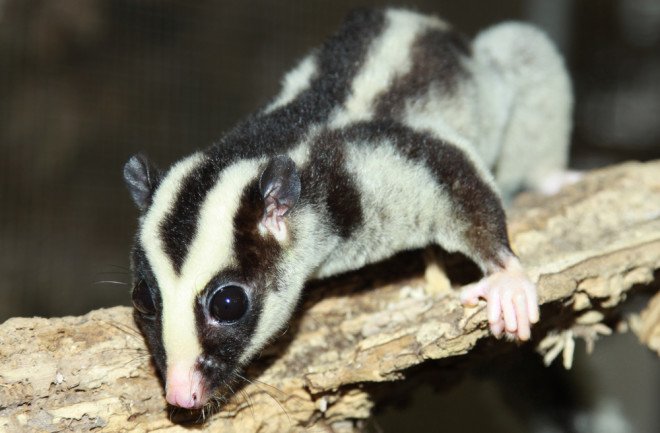Deep in the rainforests and eucalyptus woodlands of Australia and New Guinea lives an enigmatic creature known as the striped possum. Quiet, cute, and nocturnal, its favorite activity is boring holes into the trees and using its elongated fingers to extract ants and termites from the trunks within. While the striped possum is hard to spot in the wilds of Australia, it’s much more common in the lowlands of New Guinea.
The Striped Possum: A Curious Creature
The striped possum is less than a foot long, though its tail is much longer. Its black-and-white pelt resembles a miniature and much cuter skunk, and it, too, exudes a sometimes stinky odor that may help it evade predators.
With a brain-to-body ratio larger than that of any other marsupial, it’s smart, which might be why it keeps its distance from humans. But you can hear it. The striped possum makes a loud sound at night when it’s most active, which resembles an angry frog.
Read More: Why Do So Many Weird Animals Live in Australia?
Hard at Work Under the Pale Moonlight
Finding its food is no small task for the striped possum, which is said to forage for insects, flowers, fruit, and beetle larvae late into the night, from around 10 pm to 6 am, before it’s time for a snooze. The possum has struct gold when it finds a fallen tree brimming with grubs, a favorite treat for this insectivore.
Once it’s time to rest, it likes to stretch out on a bed of soft rainforest ferns or make a leafy cushion. Hiding is important during the day, considering that the indigenous people of New Guinea often hunt these cute critters for their black and white pelts. They’re also a treat for snakes in the rainforests of Australia.
There’s still a lot that we don’t know about the striped possum because it’s so elusive and rarely found in Australia. For example, we’re not completely sure why it releases such a pungent odor or the reasons for its unmistakable vocalizations.
Its reproduction is also largely a mystery, though we do know that females usually have two young and that males intensely compete for a female partner. We also know that females have pouches to carry their young, and later, after weaning, they carry their babies on their backs.
We’re not completely sure how common striped possums are, though we do know that habitat destruction is likely the reason why they’re harder to see in Australia and hunting them for their pelts in New Guinea certainly isn’t helping matters.
Read More: The World's Smallest Marsupial Is A Bloodthirsty Carnivore
A Solitary and Shy Marsupial
Once they’re weaned from their mothers, these marsupials are largely solitary until it’s time to partner up and mate. Males live by themselves and hunt that way, too. Females may den together and, of course, with their young. A lot of what we know about this quiet creature comes from those who have fallen from their mother’s backs and were rescued by humans.
One case of humans raising a baby striped possum tells us a lot about how this shy yet cuddly creature survives. Though loving and thankful for the food and shelter she was given in her early days of life, she was ready to get out and see the world, leaving her enclosure gradually and then forever.
Striped possums may be adorable but they know to keep their distance from us. And it makes good sense, the same reason we know so little about them may be why they’ve been able to survive.
Read More: Instead of Dozing Off, These Marsupials Are Too Busy… Getting Busy
Article Sources
Our writers at Discovermagazine.com use peer-reviewed studies and high-quality sources for our articles, and our editors review them for accuracy and trustworthiness. Review the sources used below for this article:
Queensland Government. Striped possum
Animaldiversity.org. Dactylopsila trivirgata striped possum
Wildlife Habitat. Striped Possum: 10 Incredible Facts

